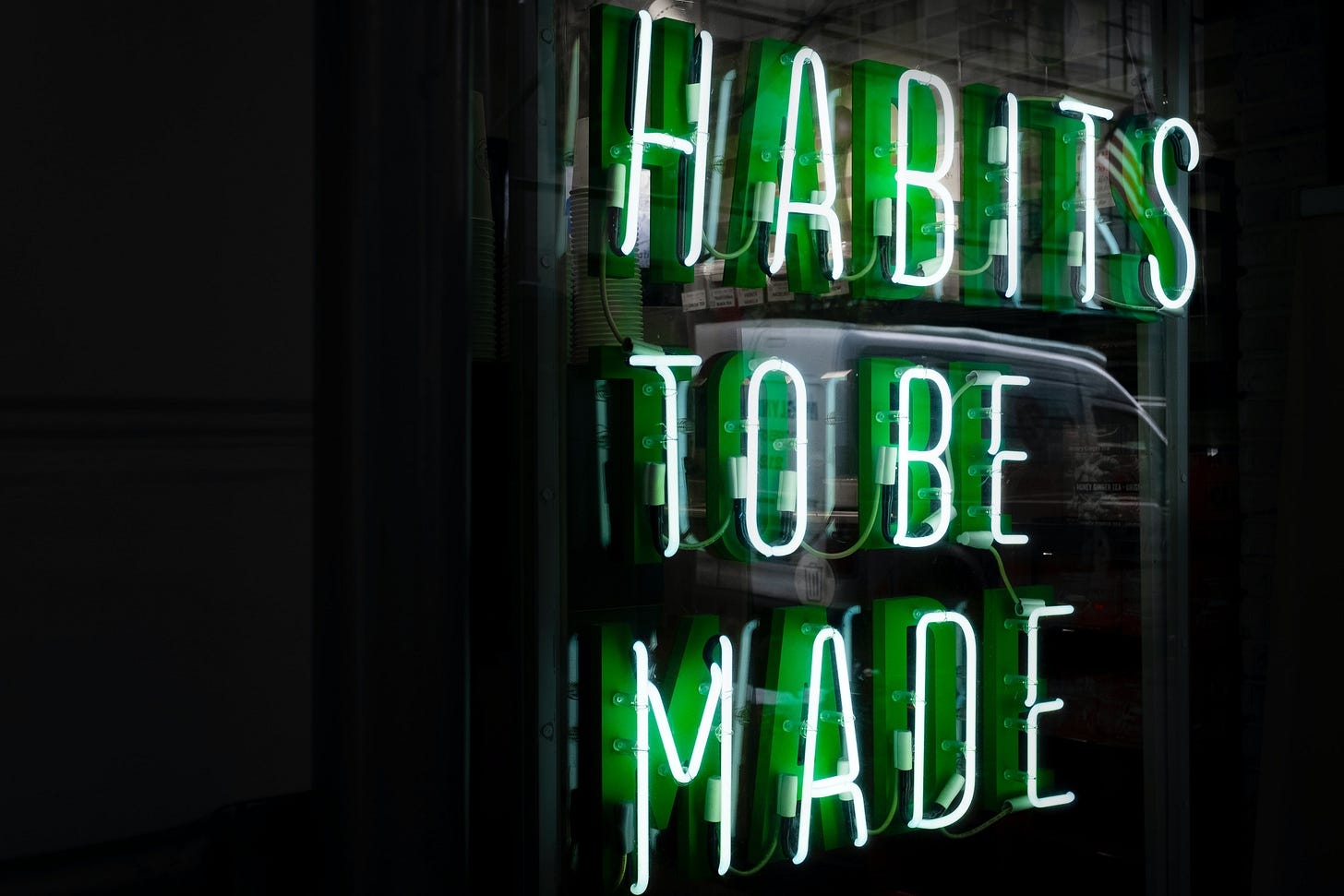How long does it take to form a habit?
Or should we think about it in a different way?

It is tempting to think of habits as something people are not actively engaged in the creation of, instead being created by associations between the cue-behaviour-reward. hence the popular myth that it takes 21 days to form a habit - it’s as if the behaviour is detached from the human.
This view of habit reflects a model of humans where we are passive beings, shaped by the external influences in our environment. Of course, we have behaviours that are more automatic in nature – it would be tiresome to have to always think about when to brush our teeth over the course of the day and remind ourselves why we were doing so. But this does not mean that they are necessarily behaviours which are created from external influences, automatically and unconsciously shape our behaviours.
Duke University’s Elizabeth Grosz suggests that all living things form habits as these enable us to manage external forces and effects through the minimal application of energy and conscious awareness (a theme also reflected in Karl Friston’s work). In a sense, therefore, habit is a matter of expertise over the environment, allowing us to tame it effectively.
If we look at the way we learn a new skill, such as riding a bicycle, then we pay close attention to the mechanics of what we are doing. We carefully think through how we manage our balance, think about pushing the pedals, keep the handlebars straight and so on. When our performance improves and we become more of an expert, we can pay less attention to these mechanics and pay more attention to other things beyond the behaviour itself, and the behaviour becomes more of a habit.
In this context, habit is less about the way the environment creates certain outcomes in the individual and is instead more reflective of the way in which we have become skilled in navigating our environments. In this way, habit systematises the world for us, which then allows our expertise to express itself. As philosopher Alva Noe puts it:
“Habits are basic and foundational aspects of our mental lives. Without habit, there is no calculation, no speech, no thought, no recognition, no game playing. Only a creature with habits like ours could have anything like a mind like ours”
It is because of habits, that we can take certain things for granted which is hugely liberating. So, throughout our daily lives we don’t need to think too closely what brand of crisps to purchase, how we get ourselves ready in the morning, where we buy our cup of coffee on the way into work.
We can then see the mechanisms of habit in a somewhat different way. Instead of seeing them as the result of external forces that will shape our passive minds, we can see them as ways in which we learn about and master the environment to help us meet our goals.
Of course, for behaviours taking place in stable and predictable contexts, looking at our routinized behaviours as habits will have some value. But the notion that it takes 21 days to form a habit is erroneous, coming from a popular book in the 1960’s, without any form of evidence.
There is a case to be made that by putting the person seeking mastery at the heart of the behaviour change then we can usefully rethink habit. Surely this approach helps brands and government agencies to more actively support people to make change happen.
Thanks to Tamara Ansons for her thoughts and inputs

Picture of the week: Spanish photographer Xavi Bou creates one image of birds flying in a singular motion by combining a series of photographs taken in succession.
News picks
As our lives are ever more dependant on technology, it feels as if lines between humans and the machines we use are increasingly fine. Indeed, perhaps we are all quasi-objects, as I reference in this article , but also seems relevant in this article about running shoes. As more of our lives are mediated online, we can surely expect to question the degree to which behaviours are necessarily always our own.
In an era of ‘fake news” we can see more easily our beliefs are socially formed – beliefs in what technology can do is one such area as this article on thermal imaging to detect COVID suggests. There is a huge body of evidence concerning what works and what does not but somehow shared beliefs can at times lead to wilful blind spots as we hope for simple solutions.
Useful survey reported here on the structure of the behavioural science industry.
Reads and views
Lana Swartz has written a very useful book about the social nature of payments, an area that is often overlooked for analysis. Returning to the theme of the main article this week, we tend to think of payment mechanisms as something mindless and habitual. This book really explodes that myth, setting out a narrative about the breadth and depth of the social meanings of payment. Interview with the author here.
Spanish photographer Xavi Bou creates one image of birds flying in a singular motion by combining a series of photographs taken in succession. Perhaps a fitting theme for the way in which we can increasingly see the interconnected nature of our lives forming a set of shared beliefs that we cannot always easily see (but which is perhaps often revealed by technology such as social media).

